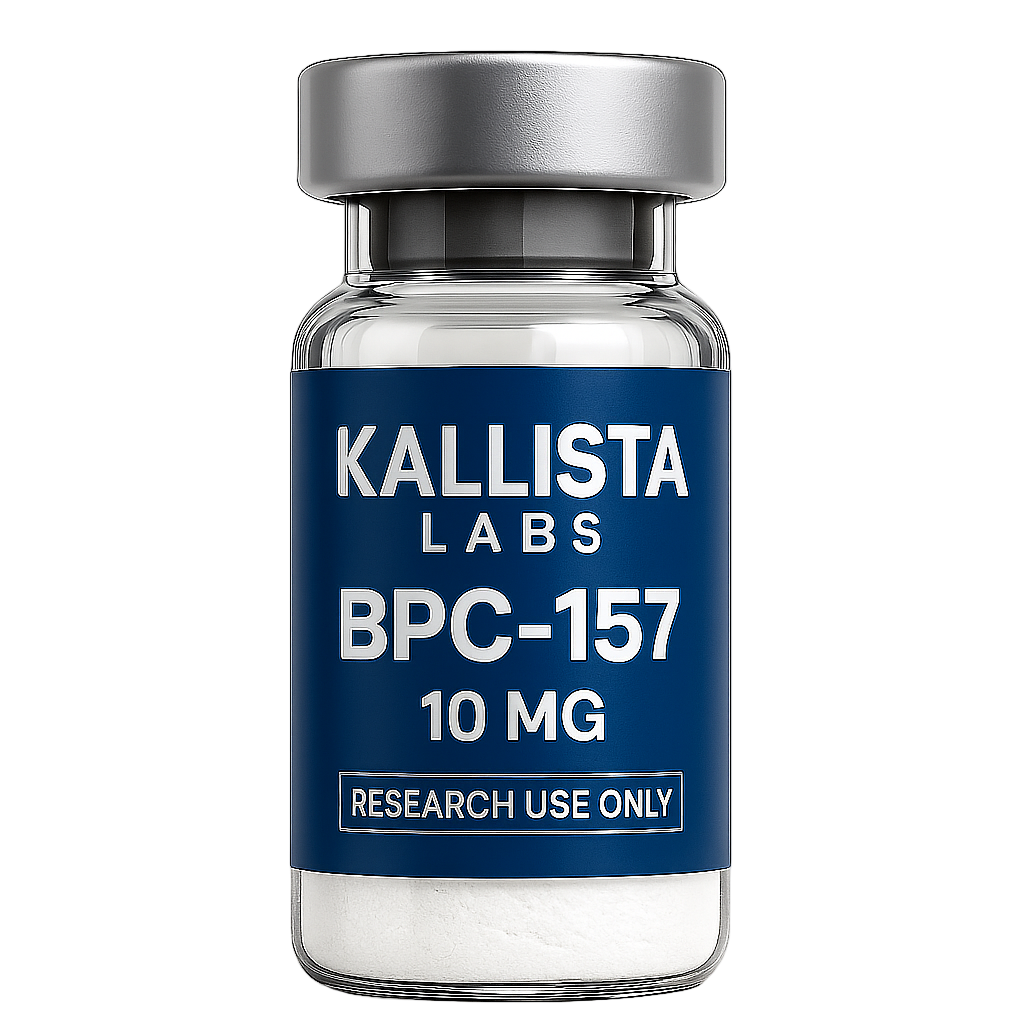BPC-157
BPC-157
Couldn't load pickup availability
BPC-157
Available in 10mg & 20mg Vials
Overview
BPC-157, also known as Pentadecapeptide BPC-157 or Body Protection Compound 157, is a synthetic 15-amino-acid peptide fragment (Gly-Glu-Pro-Pro-Pro-Gly-Lys-Pro-Ala-Asp-Asp-Ala-Gly-Leu-Val) originally derived from a protective protein found in human gastric juice. With a molecular formula of C₆₂H₉₈N₁₆O₂₂ and a molecular weight of 1419.53 g/mol, BPC-157 continues to be a high-interest compound in biochemical, cellular, and molecular research.
This peptide has gained significant attention in scientific literature for its potential role in studying tissue regeneration, angiogenesis, collagen production, fibroblast migration, and cell survival pathways—making it a valuable tool in advanced laboratory and academic research.
Research Significance & Mechanistic Insights
Across preclinical and in-vitro studies, BPC-157 has been explored for:
• Tissue Repair & Regeneration Models
Research indicates BPC-157 may influence growth-hormone–related pathways, potentially supporting studies involving collagen deposition, reticulin formation, granulation tissue, and cell proliferation.
• Angiogenesis & Vascular Studies
Multiple studies suggest BPC-157 may support endothelial behavior, VEGF expression, and vascular tube formation—valuable for investigating angiogenesis, vascular integrity, and blood-flow restoration mechanisms.
• Tendon, Ligament & Muscle Cell Models
Laboratory data suggest BPC-157 may promote tendon fibroblast migration, cell survival under oxidative stress, and activation of FAK-paxillin pathways, making it relevant for musculoskeletal research.
• Gastrointestinal Tissue Models
BPC-157 is widely referenced in research examining GI mucosal stability, serotonin-linked signaling, and angiogenic growth factor interactions in esophageal, gastric, duodenal, and intestinal tissues.
• Central Nervous System & Inflammation Models
Studies have explored BPC-157 in models of traumatic brain injury, inflammation, and neurotransmitter modulation, including potential interactions with dopamine, NO, prostaglandin, and neuron-system pathways.
Key Specifications
|
Property |
Specification |
|
CAS Number |
137525-51-0 |
|
Molecular Formula |
C₆₂H₉₈Nâ‚₆Oâ‚‚â‚‚ |
|
Molecular Weight |
1419.53 g/mol |
|
Sequence |
Gly-Glu-Pro-Pro-Pro-Gly-Lys-Pro-Ala-Asp-Asp-Ala-Gly-Leu-Val |
|
Appearance |
White Lyophilized Powder |
|
Purity |
≥99% (HPLC Verified) |
|
Form |
Lyophilized Research-Grade Peptide |
|
Solubility |
Sterile / Bacteriostatic Water |
|
Shelf Life |
24 Months (when stored properly) |
|
Storage |
–20°C; cool, dry, dark environment |
Research Focus Areas
BPC-157 is frequently used in controlled research settings involving:
- Tissue regeneration and wound-healing models
- Angiogenesis and vascular repair pathways
- Fibroblast and macrophage activation
- Collagen synthesis & extracellular-matrix dynamics
- Inflammatory and oxidative-stress mechanisms
- Gastrointestinal integrity and mucosal studies
- Myotendinous, ligament, cartilage, and soft-tissue cell behavior
- Neuronal survival, CNS injury modelling, and neurotransmitter pathways
Compliance Disclaimer
This product is sold strictly for laboratory research use only.
Not for human consumption. Not for medical, clinical, or veterinary use.
Researchers must follow all appropriate laboratory safety procedures.
Share

